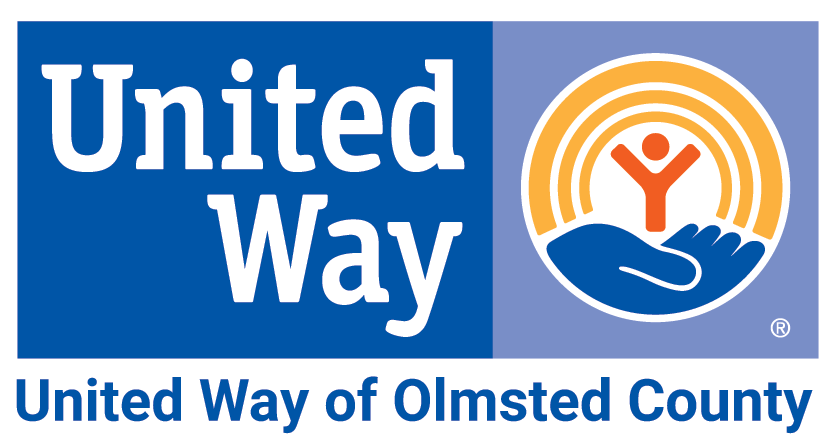CHARITABLE TRUSTS
There are two ways that Charitable Trusts can provide you with income and payments to United Way of Olmsted County too:
CHARITABLE LEAD ANNUITY TRUST (CLT)
Pays a fixed amount each year to United Way of Olmsted County and is attractive when interest rates are low.
BENEFITS
- "Loan" assets (and income) to charity for a term of years or for life.
- Receive accelerated income tax deducation or significant estate tax benefits.
EXAMPLE
Teresa Olsen is a 65-year-old widow with three adult children. Due to their investment acumen, Lois now has a net worth of about $10 million, and that is growing, so more than half of her estate will be subject to estate taxes, under the current rules. Lois owns a self-storage property, currently worth $1 million. Lois may use this asset to establish a 10%, ten year Charitable Lead Annuity Trust. Cash flow from the Property will pay $100,000 per year to the United Way foundation for the next ten years for a total of $1 million to the endowment. At the end of ten years, the self-storage property will pass to Lois’s three children. Because the value of the property grows free of gift and estate taxes, the series of ten $100,000 distributions to the United Way of Olmsted County actually increase the amount received by Lois’s children from her estate by more than $250,000.
CHARITABLE LEAD UNITRUST (CLU)
Pays a variable amount each year based on the value of the assets in the trust. With a unitrust, if the trust's assets go up in value, for example, the payments to United Way of Olmsted County go up as well.
BENEFITS
- Partial income tax deduction.
- Receive a percentage of the trust's value as income every year for one or more lifetimes or a set term of years.
- Customizable to meet differing objectives.
- Variable income can grow (or shrink) depdending on investment performance.
EXAMPLE
Mary Lou Lambert, aged 62, started working for the local savings bank as a teller when she was just 19 years old. Over the years she worked her way up in the company. When it went public ten years ago, she was one of the largest shareholders. All the while, Mary Lou has been very actively involved with the United Way, a role she felt important both for the community and her bank. Four years ago, Mary Lou’s bank was acquired in a stock swap, making Mary Lou’s share of the bank worth about $4 million. While she enjoys her newfound wealth, Mary Lou is approaching retirement age and it concerns her that the single bank stock represents over two-thirds of her net worth. She would like to diversify her portfolio, but, because her basis is near $0, she would be subject to Federal capital gains taxes, state income taxes and other taxes, which could total as much as 25% of the value of any stock she sells.
After talking with one of the United Way’s planned giving specialists, Mary Lou decides to establish a 5% Charitable Remainder Unitrust (CRUT) using one third of her stock, worth $1 million. She will be eligible for a charitable deduction of about $400,000 which she can use to shelter capital gains from the sale of an additional $500,000 of her stock, proceeds of which can be reinvested elsewhere. The $1milion worth of shares she placed in the CRUT can be sold without any capital gains (since the CRUT is a charitable entity) and can be reinvested in other assets. Mary Lou will receive income of 5% of the trust’s value each year, at the outset about $50,000 per year. When Mary Lou dies, the trust’s assets will pass to the United Way and will establish an endowment in Mary Lou’s name.
Mary Lou will have reduced her risk by reducing her exposure to the bank stock from $3 million to $1.5 million without paying any net capital gains taxes, which might have cost her as much as $375,000 had she simply sold $1.5 million of the stock, and might have reduced her investable principal (and thus her income) by up to 25%.
Questions about the best way for you to benefit through a planned gift? Contact Resource Development at 507.287.2000 or email at RD@uwolmsted.org.
Information contained herein was accurate at the time of posting. The information on this website is not intended as legal or tax advice. For such advice, please consult an attorney or tax advisor. Figures cited in any examples are for illustrative purposes only. References to tax rates include federal taxes only and are subject to change. State law may further impact your individual results.
